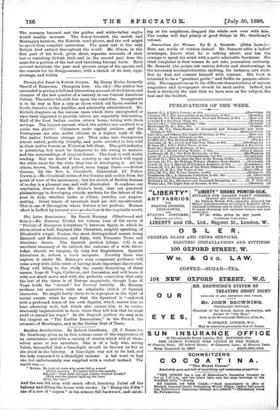Sons.)—Mr. Hannay divides his volume (one of the series of
" Periods of European Literature ") between Spain, to which he allots about a half, England (the literature, roughly speaking, of Elizabeth's reign), France, the most distinguished names being Ronsard and Montaigne, and Italy, with Torquato Tasso and Giordano Bruno. The Spanish portion (chaps. 1-6) is an excellent summary of its subject, the outcome of a wide know- ledge, shared, we imagine, by very few Englishmen. Spanish literature is, indeed, a terra incognita. Possibly those who explore it under Mr. Hannay's very competent guidance will come away with little sense of having made important discoveries. They will bring to the study the scanty furnishing of three names, Lope di Vega, Calderon, and Cervantes, and will leave it with not much more, and with the probable conviction that only the last of the three is of Europe magnitude, though Lope di Vega holds the " record " for literary fertility. Mr. Hannay prefaces his narrative with an admirable sketch of Spanish character. He might fairly claim to be a prophet in the light of recent events when he says that the Spaniard is " endowed with a profound sense of his own dignity, which nerves him to bear adversity well, but which also causes him to be contu- maciously impenetrable to facts when they tell him that be must yield or amend his ways." In the Engfish portion we may note the chapter on " The Earlier Dramatists," in the French the estimate of Montaigne, and in the Italian that of Tasso.


































 Previous page
Previous page